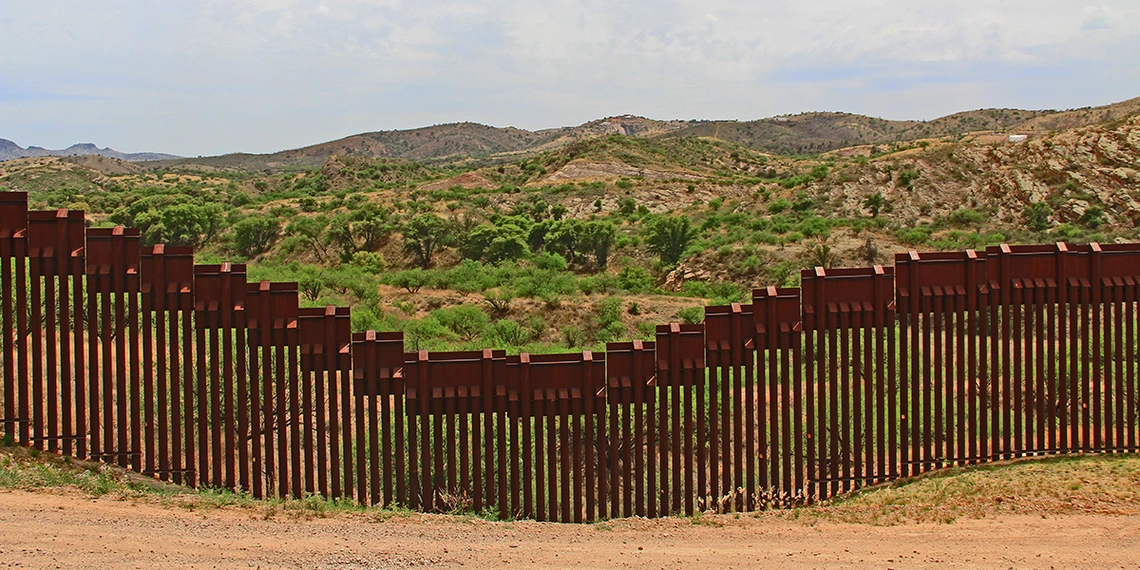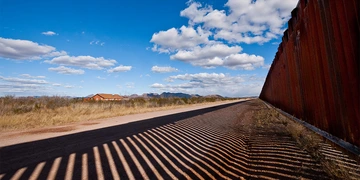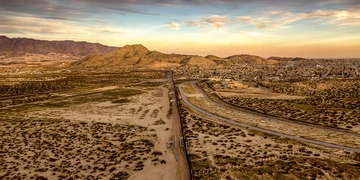Does Border Security Mean Loss of Biodiversity?
The 2,000-mile stretch of land that divides Mexico from the U.S. is rich in native species. What happens when the roaming range of those species is disrupted?

Long before the U.S.-Mexican border became a hotbed of political activity, the region was home to a vast array of wildlife — Sonoran pronghorn, desert tortoise, black bear, jaguar and ocelot, to name a few. As new walls and fences go up along the southern border, the livelihood of these species could be compromised, says Melanie Culver, a U.S. Geological Survey geneticist working as faculty in the School of Natural Resources and the Environment at the University of Arizona, who has studied these species and the effect that a physical barrier can have on their populations.
Culver isn’t alone in her concern: In 2018, nearly 3,000 scientists signed an article in the journal BioScience, asserting that new border walls would threaten some of the continent’s most biologically diverse regions by blocking free movement of many species. More than 1,500 native animal and plant species would be affected, the paper said, including 62 listed as endangered or vulnerable.
Why a Wall Spells Trouble for Wildlife
Wildlife in the borderlands traverse the divide and have populations in both the United States and Mexico. If a nonpermeable barrier is erected, those populations are divided into separate, smaller groups, leading to inbreeding and other issues caused by population bottleneck, an event that drastically reduces their numbers.
There are three types of fencing to consider. The first is vehicle barrier grade, which prevents vehicles from crossing the border but could be scaled by people (it’s used mostly in rural areas in combination with aerial and sensor monitoring). Bollard-grade fencing prevents vehicles and people from crossing with evenly spaced bars and gaps — it allows people on both sides of the border to see through to each other. Finally, nonpermeable fencing is a solid wall allowing for no gaps between posts and no visibility into either country.

A nonpermeable wall at the U.S.-Mexico border could potentially affect 1,500 different plant and animal species.
Sensitive species like the flat-tailed horned lizard, which breeds and lives on both sides of the border, are at the greatest risk, Culver says. If a nonpermeable fence is installed, then two separate populations of flat-tailed horned lizards exist in the United States and Mexico, with fewer breeding options and reduced habitat.
Culver points to the Florida panther as an example of a worst-case scenario. “It’s one of the most severe examples of population bottleneck,” she says. “They suffered from heart defects, sperm abnormality, affected health and reproduction — all caused by a loss of habitat and development affecting the place where they were living.
“The Florida panthers were dying because of their genetic defects. They became their own worst enemy. We don’t want to end up with dozens of populations like that along the border,” Culver says.
Animals of varying size and ability run into issues with bollard fencing and vehicle barriers, as well. The desert tortoise can’t fit through the gaps of a bollard fence, while permeable vehicle barriers already erected in some areas can act as behavioral barriers to open-country runners like the Sonoran pronghorn.
Culver emphasizes the importance of high-visibility and low-visibility animal species. In an ecosystem, you need the top predators, such as black bears, as much as you need the bats and the lizards. “It’s important to be aware of all of the species,” she says. “Reptiles in the desert are one of the most abundant species and there’s a reason for that abundance. I don’t think the ecological community would do well without them; there will be cascading effects.”

Melanie Culver, a U.S. Geological Survey geneticist working as faculty in the School of Natural Resources and the Environment at the University of Arizona, has urged U.S. Customs and Border Protection and the National Fish and Wildlife Foundation to work together and find a solution to protect wildlife at the border.
Working Toward a Solution
A Customs and Border Protection policy says the agency “will integrate environmental stewardship and sustainability practices into operations and activities.” But Congress has given the agency the power to waive environmental protections like the Endangered Species Act that could require the government to develop less-damaging alternatives and perform environmental monitoring after construction.
In an effort to mitigate the issue, Culver has had discussions with U.S. Customs and Border Protection and the National Fish and Wildlife Foundation to inform them about possible effects on populations on the border — and to show that there could be a middle ground.
“We should eliminate all nonpermeable fencing,” Culver says. “Many border patrol agents don’t like the solid fencing either.”
As those decisions are being made, Culver is continuing studies of the species populations along the border. In 2008, she measured samples from 13 species for microsatellite allele discontinuity. At the time, there were none. From there, Culver plans to examine how species’ data compares with the data she pulled before 2008 — how are those species affected, is there any discontinuity? That information will then be used to show the impact of nonpermeable fencing on species populations.
Meanwhile, scientists continue to urge the government to pursue national security with an approach that preserves the region’s natural heritage and ecosystem. “Ecosystems require a functioning community of every trophic level. You need the herbivores all the way down to the bacteria in the soil and the small rodents and lizards that eat the insects,” Culver says. “If you lose one trophic level, the ecosystem will collapse.”
